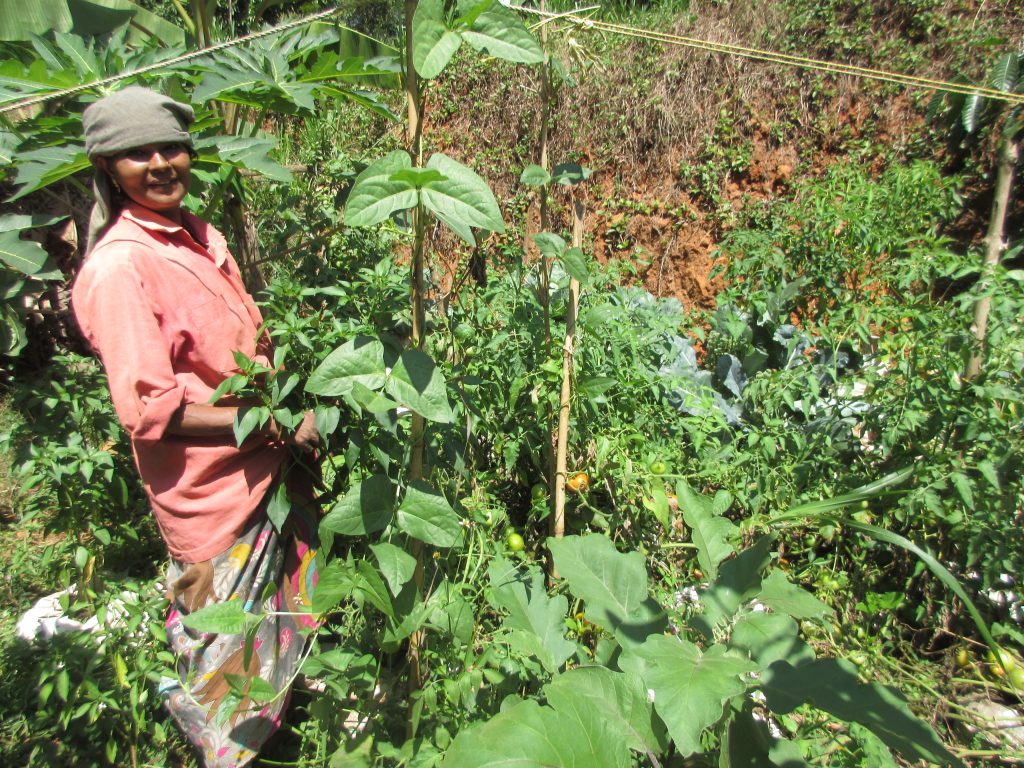To nations dominated by information and technology, agriculture might seem  like a sign of moving backward. But for many countries around the world, like India, agriculture remains a crucial part of its identity. Spread out over a series of entries I will highlight the multidimensionality of agriculture, beginning with its impact on economics. Contrary to popular belief, agriculture has the potential to be innovative. Sustainable agriculture-a topic we will revisit in my final entry of this series-will help to not only sustain a nation’s economic life, but also its cultural legacy, environment, and health.
like a sign of moving backward. But for many countries around the world, like India, agriculture remains a crucial part of its identity. Spread out over a series of entries I will highlight the multidimensionality of agriculture, beginning with its impact on economics. Contrary to popular belief, agriculture has the potential to be innovative. Sustainable agriculture-a topic we will revisit in my final entry of this series-will help to not only sustain a nation’s economic life, but also its cultural legacy, environment, and health.
The agricultural industry plays a significant role in the economic life of a nation, even those deemed industrialized. For example, 2015 saw a contribution of $992 billion to the United States GDP from agriculture and related industries. This contribution is suspected to be even larger as agriculture impacts other sectors including the food and beverage, and textile and apparel industries [1]. Between 2001 and 2010, global agricultural output has grown 2.5% per year [2]-a growth often led by the emerging economies of Brazil, Russia, India, and China [3]. Known together as the BRIC coalition, these four nations are gaining important power within a global economic playing field long dominated by the world’s richest countries: Canada, France, Germany, Italy, Japan, the United Kingdom, and the United States [4].
The agricultural industry is a large component of daily life in India, especially in the nation’s rural regions. Nearly 75% of Indian households rely on a rural income and the vast majority of lower-income individuals reside in rural settings [5]. Globally, India is second only to the United States in holding the largest amount of agricultural land-land which comprises a vast array of vegetation including spices, milk, tea, wheat, rice, and grapes [6]. In Kerala, the region in which Wayanad is located, 82% of the land is dedicated to agriculture [7]. Wayanad allocates around 98% of its 212,560 hectares to agriculture. Approximately 83% of the nearly 156,000 landholdings in the district are owned by small or marginal farmers [8]. In all, agriculture is the largest livelihood provider in India [9] and plays a crucial role in the lives of Wayanad locals.
Agriculture in Wayanad is experiencing several threats, contributing to harmful effects on various aspects of life in the region, not least among them the economy. This, in turn, hurts small farmers and their families. In recent years, cultivation in Wayanad has seen a shift from agricultural products to non-agricultural products. Between the 2000-01 and 2013-14 seasons, the area dedicated to cultivating paddy, coconut, cashewnut, and pepper in Kerala State collectively lost 335,000 hectares. Rubber cultivation area increased 101,000 hectares in the same time frame. Studies of the soil in rubber-dominated regions reveal a decline in key nutrients [7]. Increased use of chemical fertilizers and pesticides has also resulted in depletion of soil plus harmful health effects. Specific environmental and health effects will be discussed in later entries; however, it is worth briefly mentioning their existence here as they do contribute to economic loss for farmers. Depleted soil decreases yield, thus hurting a farmer’s income. In addition, health issues contribute to farmers losing out on crucial days of work-again hurting their earnings and their families who rely on them [7]. Finally, cash crops, grown for the purpose of generating a profit, have come to dominate agriculture in the region. The issue here is a decrease in variety which places farmers at risk of placing all their trust in one crop that may or may not produce a large yield.
At the macro level, agriculture contributes to the economic health of our global society. The industry plays a crucial role in the lives of several nations’ rural and poor populations at the micro level. Because of this, any threats facing the agricultural industry, whether in the form of chemical farming methods or cultivation changes, have a significant and lasting impact on the lives of smallholder farmers, their families, and rural families, in general. Sustainable agriculture is one solution to the issues facing the agricultural sector in India and around the world. Stay tuned for future entries in the Multidimensionality of Agriculture series to learn more about the impact of agriculture on life in India as well as the benefits of sustainable agriculture and the role that Profugo is taking on to reverse the damage that has been done.
Sources:
[1]https://www.ers.usda.gov/data-products/ag-and-food-statistics-charting-the-essentials/ag-and-food-sectors-and-the-economy.aspx [2]https://www.ers.usda.gov/amber-waves/2013/november/growth-in-global-agricultural-productivity-an-update/ [3]https://globaledge.msu.edu/blog/post/1400/agriculture-creates-an-economic-future-for-developing-countries [4]http://web.a.ebscohost.com.proxy-wcupa.klnpa.org/bsi/detail/detail?vid=0&sid=0601685e-3285-4d0f-bfae-78d80b717d87%40sessionmgr4006&bdata=JnNpdGU9YnNpLWxpdmU%3d#AN=110908544&db=bth [5]http://www.worldbank.org/en/news/feature/2012/05/17/india-agriculture-issues-priorities [6]https://www.ibef.org/industry/agriculture-presentation [7]http://web.b.ebscohost.com.proxy-wcupa.klnpa.org/ehost/pdfviewer/pdfviewer?vid=1&sid=0baab178-63fe-4ddb-98aa-008d15ec6b52%40sessionmgr101 [8]http://satoyama-initiative.org/homegardens-sustainable-land-use-systems-in-wayanad-kerala-india/ [9]https://india.gov.in/topics/agriculture
Leave a Reply
You must be logged in to post a comment.